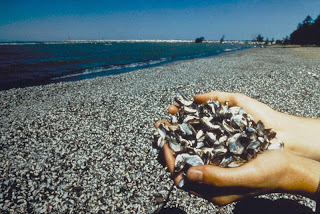Certain populations throughout the world have different growth rates within cohorts. In nations with a lack of medicine or education such as Kenya, there is too much reproduction occuring between 10-15 year old's. Because younger people are reproducing more than older people, the population size between 0-10 year old children is very large and steadily decreases as they age. In other nations such as Italy, there is a much lower population rate in younger peoples making their population size relatively steady throughout ages. Population sizes are a major effect on environments everywhere. In nations such as China overpopulation has had a negative effect on their nation and ability to survive.

Survivorship Curves
There are three types of strategies used by different species that help them survive. Type 1 includes humans and is when a species thrives in population size up and till the post-reproductive stage. Humans continue to live and reproduce successfully until they are past the age of reproduction then begin to die off. Type 2 includes Hydra's and is when there is a constant production and mortality rate throughtout the species. Year by year the population sizes remain the same and they continue to die off and reproduce consistently until death. Type 3 which includes Oysters has a very high mortality rate in the early stages of life. In Oysters, almost 99% of their population dies off before they can even reach a reproductive state. The survivors however, live a long life after their survival and must reproduce a lot. They cannot donate much energy or time to each individual offspring because 99% of them will die off so they will reproduce as much as possible then walk away. As an example, after the salmon are born they travel downstream to grow and develop. Once they become of age to reproduce they must swim all the way back upstream. This is of great cost to the parent salmon which is why once they arrive upstream, they reproduce as much as possible to get as much out of their journey as they can. This process not only affects animals but plants as well. The sunflower is an annual plant that only flowers one season. The flower cannot miss this season or else it could be fatal to the survival of it's next generation so they must strike while the iron is hot !


Reproductive Strategies

Weedy plants such as dandelions produce many seeds and can grow very rapidly unlike the palms tree. In dandelions it is known that some out of it's many offspring will surivive and make more plants. With the palm tree, they produce a moderate number of very large seeds. Their large endosperm provides nutrients for the embryo. This process ensures that a larger portion of their small offspring with survive and succeed.
Population Growth
Change in population = Births - Deaths
dN/dt=riN
By using this formula, scientist's can presume the average number of offspring each couple had to of had in order for the population to grow from it's original size to it's present size. If every pair has two offspring, they are merely replacing themselves in the environment and not adding or taking away any numbers. But by only having less than two or more than two offspring you are changing the population and adding or taking away certain numbers from the species.
N= How many you start with. (specifically females being they are the ones that reproduce.)
r= The rate of growth, specifically how many offspring each couple had
ri= The intrinsic rate or how many offspring does your species generally make over time
t= Time
d = rate of change
Regulation of population size/ Introduced species
When certain species are endangered or introduced to a new environment, they can be protected and allow to reproduce exponentially. This is when there is no boundaries or limits set on the amount of offspring allowed to be produced. There are limiting factors that make population necessary to be regulated as well. Density dependant factors consist of competion for food and nesting sights and disease. Density independant factors consist of certain abiotic things like sunlight, rainfall and other sources of necessities. These are uncontrollable but still play a major role in the survival of a species in an environment.
When a species is introducted to a new environment it can greatly affect this new area. As an example, when European ships docked in North American shorelines, they brought along Zebra mussels. These mussels reproduce sporadically thus taking over entire shorelines. The fish who once used to lay their eggs on those shorelines are now in dire need to find a new ground to reproduce. Also, Purple Loosetrife which is a large flower that reproduces very rapidly and efficiently has taken over certain wetlands. These wetlands which were once home to all kinds of species is now infested with these purple loosestrife and these species which once lived there can no longer survive.


No comments:
Post a Comment